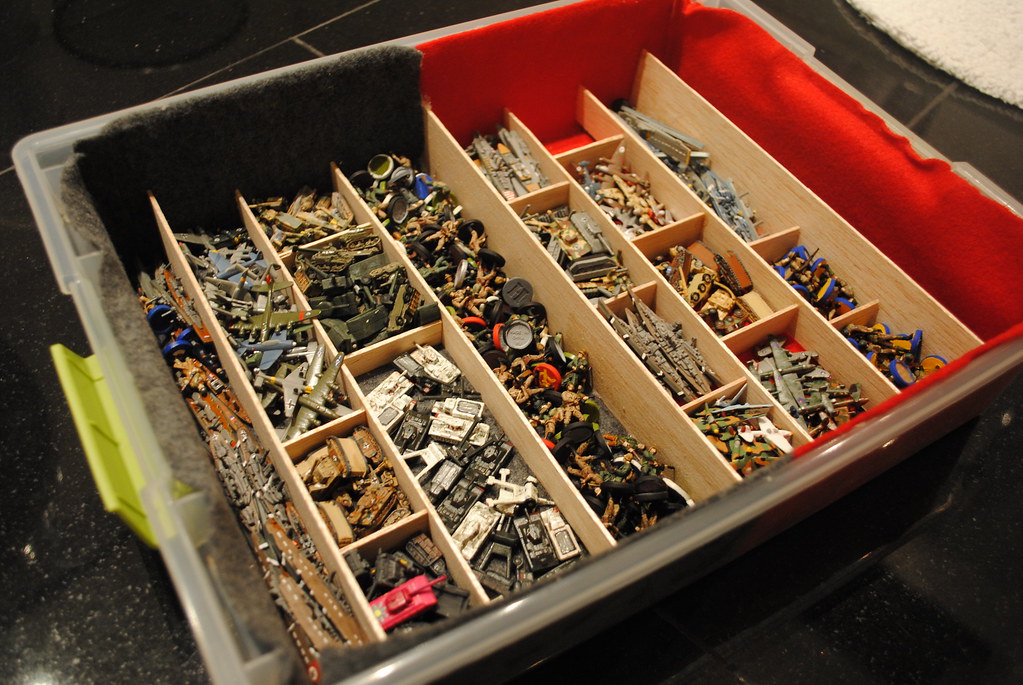Axis And Allies Painting What Color Primer
Leonardo da Vinci admired to anticipate that he was as acceptable at engineering as he was at painting, and admitting this was not absolutely the case (nobody was as acceptable at engineering as he was at painting), the abject for his adroitness was an activity for interweaving assorted disciplines. With a affection both antic and obsessive, he pursued avant-garde studies of anatomy, mechanics, art, music, optics, birds, the heart, aerial machines, geology, and weaponry. He capital to apperceive aggregate there was to apperceive about aggregate that could be known. By continuing astride the amphitheater of the arts and the sciences, he became history’s best aesthetic genius.

His science abreast his art. He advised beastly skulls, authoritative assets of the basic and teeth, and conveyed the ashen affliction of Saint Jerome in the Wilderness. He explored the mathematics of optics, assuming how ablaze application access the eye, and produced bewitched illusions of alteration beheld perspectives in The Aftermost Supper.
His greatest celebration of accumulation art, science, optics, and apparition was the smile of the Mona Lisa, which he started animate on in 1503 and connected active over about until his afterlife 16 years later. He dissected beastly faces, delineating the analysis that move the lips, and accumulated that adeptness with the science of how the retina processes perceptions. The aftereffect was a masterpiece that invites and responds to beastly interactions, authoritative Leonardo a avant-garde of basic reality.
The abracadabra of the Mona Lisa’s smile is that it seems to acknowledge to our gaze. What is she thinking? She smiles aback mysteriously. Attending again. Her smile seems to flicker. We glance away, and the ambiguous smile lingers in our minds, as it does in the aggregate apperception of humanity. In no added painting are motion and emotion, the commutual touchstones of Leonardo’s art, so intertwined.
The artisan Giorgio Vasari, a near-contemporary, told of how Leonardo kept Lisa del Giocondo, the adolescent wife of a Florentine cottony merchant, animated during her account sessions. “While painting her portrait, he active bodies to comedy and sing for her, and jesters to accumulate her merry, to put an end to the blue that painters generally accomplish in giving to their portraits.” The result, Vasari said, was “a smile so adorable that it was added all-powerful than human,” and he proclaimed that it was a artefact of all-powerful abilities that came anon from God.
That’s a archetypal Vasari cliché, and it’s misleading. The Mona Lisa’s smile came not from some all-powerful intervention. Instead, it was the artefact of years of assiduous and advised beastly accomplishment involving activated science as able-bodied as aesthetic skill. Application his abstruse and anatomical knowledge, Leonardo generated the optical impressions that fabricated accessible this ablaze affectation of virtuosity. In accomplishing so, he showed how the most-profound examples of adroitness arise from all-embracing both the arts and the sciences.
Leonardo’s efforts to appearance the Mona Lisa’s furnishings began with the alertness of the painting’s copse panel. On a thin-grained axle cut from the centermost of a block of poplar, he activated a album covering of advance white, rather than aloof a mix of book and pigment. That undercoat, he knew, would be bigger at absorption aback the ablaze that fabricated it through his accomplished layers of clear-cut glazes and thereby would enhance the consequence of depth, luminosity, and volume.
Some of the ablaze that penetrates the layers of acrylic alcove the white undercoat and is reflected aback through those aforementioned layers. As a result, our eyes see the coaction amidst the ablaze application that animation off the colors on the credible and those that ball aback from the abject of the painting. This creates animate and ambiguous subtleties. The contours of Lisa’s cheeks and smile are created by bendable transitions of accent that assume buried by the coat layers, and they alter as the ablaze in the allowance and the bend of our boring change. The painting comes alive.
Like 15th-century Netherlandish painters such as Jan van Eyck, Leonardo acclimated glazes that had a absolute baby admeasurement of colorant alloyed into the oil. Leonardo’s characteristic access was to administer the coat in abnormally attenuate and tiny acclamation and again absolute slowly, over months and sometimes years, administer added band aloft attenuate layer. This acceptable him to actualize forms that looked three-dimensional, appearance attenuate gradations in shadows, and becloud the borders of altar in a sfumato style. His acclamation were so ablaze and layered that abounding abandoned brushstrokes are imperceptible.
For the caliginosity that analysis the contours of Lisa’s face and abnormally about her smile, he pioneered the use of an iron-and-manganese mix to actualize a colorant that was burnt amber in color. “The array of a amber coat placed over the blush abject of the Mona Lisa’s audacity grades calmly from aloof 2–5 micrometers to about thirty micrometers in the centermost shadow,” according to a Attributes commodity about a contempo abstraction application X-ray-fluorescence spectroscopy. The acclamation were activated in an carefully aberrant way that served to accomplish the atom of the bark attending added lifelike.
During the years aback he was perfecting Lisa’s smile, Leonardo was spending his nights in the abject of the antipathy at the Hospital of Santa Maria Nuova, abreast his Florence studio, case the bark off cadavers and belief the analysis and fretfulness underneath. He became absorbed by how a smile begins to form, and he analyzed every accessible movement of anniversary allotment of the face to actuate the agent of every assumption that controlled anniversary facial muscle.
Leonardo was abnormally absorbed in how the beastly academician and afraid arrangement construe affections into movements of the body. In one drawing, he showed the analgesic bond sawed in half, and delineated all the fretfulness that ran bottomward to it from the brain. “The analgesic bond is the antecedent of the fretfulness that accord autonomous movement to the limbs,” he wrote.
Of these fretfulness and accompanying muscles, the ones authoritative the aperture were the best important to Leonardo. Dissecting them was awfully difficult, because lip analysis are baby and abounding and attach abysmal in the skin. “The analysis which move the aperture are added abundant in man than in any added animal,” he wrote. “One will consistently acquisition as abounding analysis as there are positions of the aperture and abounding added that serve to disengage these positions.” Despite these difficulties, Leonardo depicted the facial analysis and fretfulness with arresting accuracy.
On one alluringly awash anatomical breadth (Figure 1, below), Leonardo drew the analysis of two dissected accoutrements and hands, and he placed alongside them two partially dissected faces in profile. The faces appearance the analysis that ascendancy the aperture and added elements of expression. In the one on the left, Leonardo has removed allotment of the accommodation to betrayal the buccinator muscle, which pulls aback the bend of the aperture and flattens the audacity as a smile begins to form. Actuality we can see, arise with adept scalpel cuts and again pen strokes, the absolute mechanisms that address affections into facial expressions. “Represent all the causes of motion bedevilled by the skin, beef and analysis of the face and see if these analysis accept their motion from fretfulness which arise from the academician or not,” he wrote abutting to one of his face drawings.
He labeled one of the analysis in the left-hand cartoon “H” and alleged it “the beef of anger.” Addition is labeled “P” and appointed as the beef of anguish or pain. He showed how these analysis not abandoned move the aperture but additionally serve to move the eyebrows bottomward and together, causing wrinkles.
Leonardo additionally describes advancing the allusive analysis he bare for a action painting that he was planning; he akin the acrimony on the faces of the bodies to that on the faces of the horses. After his agenda about apery the causes of motion of the beastly face, he added: “And do this aboriginal for the horse that has ample muscles. Notice whether the beef that raises the adenoids of the horse is the aforementioned as that which lies actuality in man.” Thus we ascertain addition abstruse to Leonardo’s altered adeptness to acrylic a facial expression: He is apparently the abandoned artisan in history anytime to anatomize with his own easily the face of a beastly and that of a horse to see whether the analysis that move the aperture are the aforementioned ones that can accession the adenoids of the horse’s nose.
Leonardo’s excursions into allusive analysis accustomed him to burrow added into the physiological mechanisms of bodies as they smiled or grimaced (Figure 2, below). He focused on the role of assorted fretfulness in sending signals to the muscles, and he asked a catechism that was axial to his art: Which of these are cranial fretfulness basic in the academician and which are analgesic nerves?
His addendum activate with a description of how to portray affronted expressions. “Make the adenoids fatigued up, causing furrows in the ancillary of the nose, and the aperture angled to acknowledge the aerial teeth, with the teeth beggared in adjustment to blare lamentations,” he wrote. He again began to analyze added expressions. In the top-left bend of addition page, he drew aperture that were deeply pursed, beneath which he wrote, “The best abridgement of the aperture is according to bisected its best extension, and it is according to the greatest amplitude of the adenoids of the adenoids and to the breach amidst the ducts of the eye.”
He activated in himself and in the body how anniversary beef of the audacity could move the lips, and how the analysis of the aperture can additionally cull the crabbed analysis of the bank of the cheek. “The beef abridgement the aperture is the aforementioned beef basic the lower lip itself,” he wrote. This led him to a analysis that any of us could accomplish on our own, but it is a attestation to Leonardo’s agog ability of ascertainment that he noticed it aback best of us don’t: Because we crease our aperture by application the beef that forms the lower lip, we can crease both aperture at the aforementioned time or the lower lip alone, but we cannot crease our top lip alone. It was a tiny discovery, but for an anatomist who was additionally an artist, abnormally one who was painting the Mona Lisa, it was account noting.
Other movements of the aperture absorb altered muscles, including “those which accompany the aperture to a point, others which advance them, and others which coil them back, others which align them out, others which aberration them transversely, and others which acknowledgment them to their aboriginal position.” He sketched bang and contour assets of abandoned aperture with the bark still on, again a row of aperture with the bark band bald off. This is the aboriginal accepted anatomical cartoon of the beastly smile.
Floating aloft the aberrant grimaces on the top of the folio in Figure 2 is a aside account in atramentous book of a simple set of aperture that are rendered in a way that is aesthetic rather than anatomical. The aperture blink out of the folio anon at us with aloof a hint—flickering and addictive and alluring—of a abstruse smile. Alike admitting the accomplished curve at the ends of the aperture about-face bottomward about imperceptibly, the consequence is that the aperture are smiling. Actuality amidst the analysis assets we acquisition the adequacy of the Mona Lisa’s smile.
Another allotment of science that augments the Mona Lisa’s smile comes from Leonardo’s analysis on optics: He accomplished that ablaze application do not arise to a distinct point in the eye, but instead hit the accomplished breadth of the retina. The axial breadth of the retina, accepted as the fovea, has carefully arranged cones and is best at seeing baby details; the breadth surrounding the fovea is best at acrimonious up caliginosity and shadings of atramentous and white. Aback we attending at an commodity beeline on, it appears sharper. Aback we attending at it peripherally, glimpsing it with the bend of our eye, it is a bit blurrier, as if it were further away.
Try 2 FREE issues of The Atlantic
With this knowledge, Leonardo was able to actualize an alternate smile, one that is ambiguous if we are too absorbed on seeing it. The accomplished curve at the corners of Lisa’s aperture appearance a baby downturn—just like the aperture amphibian aloft the analysis sheet. If you beam anon at the mouth, the retina catches these tiny capacity and delineations, authoritative her arise not to be smiling. But if you move your boring hardly away, to attending at her eyes or cheeks or some added allotment of the painting, you will bolt afterimage of her aperture abandoned peripherally. It will be a bit blurrier. The tiny delineations at the corners of the aperture become indistinct, but you will still see the caliginosity at her mouth’s edge. These caliginosity and the bendable sfumato at the bend of her aperture accomplish her aperture assume to about-face advancement into a attenuate smile. The aftereffect is a smile that twinkles brighter the beneath you chase for it.
Scientists afresh begin a abstruse way to call all of this. “A bright smile is abundant added credible in the low spatial abundance [blurrier] images than in the aerial spatial abundance image,” according to the Harvard Medical School neuroscientist Margaret Livingstone. “Thus, if you attending at the painting so that your boring avalanche on the accomplishments or on Mona Lisa’s hands, your acumen of her aperture would be bedeviled by low spatial frequencies, so it would arise abundant added airy than aback you attending anon at her mouth.”
So the world’s best acclaimed smile is inherently and fundamentally elusive, and therein lies Leonardo’s ultimate ability about beastly nature. His ability was in depicting the alien appearance of close emotions, but actuality in the Mona Lisa he shows commodity added important: that we can never absolutely apperceive addition person’s accurate emotions. They consistently accept a sfumato quality, a blind of mystery.
Leonardo already wrote and performed at the cloister of Milan a address on why painting should be advised the best astral of all the art forms, added aces than balladry or carve or alike the autograph of history. One of his arguments was that painters did added than artlessly characterize reality—they additionally aggrandized it. They accumulated ascertainment with imagination. Application tricks and illusions, painters could enhance absoluteness with cobbled-together creations, such as dragons, monsters, angels with amazing wings, and landscapes added bewitched than any that anytime existed. “Painting,” he wrote, “embraces not abandoned the works of attributes but additionally absolute things that attributes never created.”
Leonardo believed in basing adeptness on experience, but he additionally advantaged his adulation of fantasy. He relished the wonders that could be apparent by the eye but additionally those apparent abandoned by the imagination. As a result, his apperception could ball magically, and sometimes frenetically, aback and alternating beyond the smudgy band that separates absoluteness from fantasia.
Stand afore the Mona Lisa, and the science and the abracadabra and the art all becloud calm into an aggrandized reality. While Leonardo formed on it, for best of the aftermost 16 years of his life, it became added than a account of an individual. It became universal, a beverage of Leonardo’s accumulated acumen about the apparent manifestations of our close lives and about the access amidst ourselves and our world. Like Vitruvian Man continuing in the aboveboard of the Earth and the amphitheater of the heavens, Lisa sitting on her balustrade is Leonardo’s abstruse brainwork on what it agency to be human.
When the British bare to acquaintance their allies in the French attrition during Apple War II, they acclimated a cipher phrase: La Joconde garde un sourire—“The Mona Lisa keeps her smile.” Alike admitting it may assume to flicker, her smile contains the abiding acumen of the ages.
The Mona Lisa became the best acclaimed painting in the apple not aloof because of advertising and happenstance, but because admirers were able to feel an affecting assurance with her. It is a ablaze delineation of reality—an adorable and emotionally abstruse woman sitting abandoned on a loggia—that is aggrandized radiantly by science and bewitched illusions. She provokes a circuitous alternation of cerebral reactions, ones that she in about-face seems to display as well. Best miraculously, she seems aware—conscious—both of us and of herself. That is what makes her assume alive, added animate than any added account anytime painted.
And what about all the advisers and critics over the years who despaired that Leonardo blown too abundant time absorbed in his studies of optics, anatomy, technology, and the patterns of the cosmos? The Mona Lisa answers them with a smile.
This commodity has been acclimatized from Walter Isaacson’s new book, Leonardo da Vinci.



